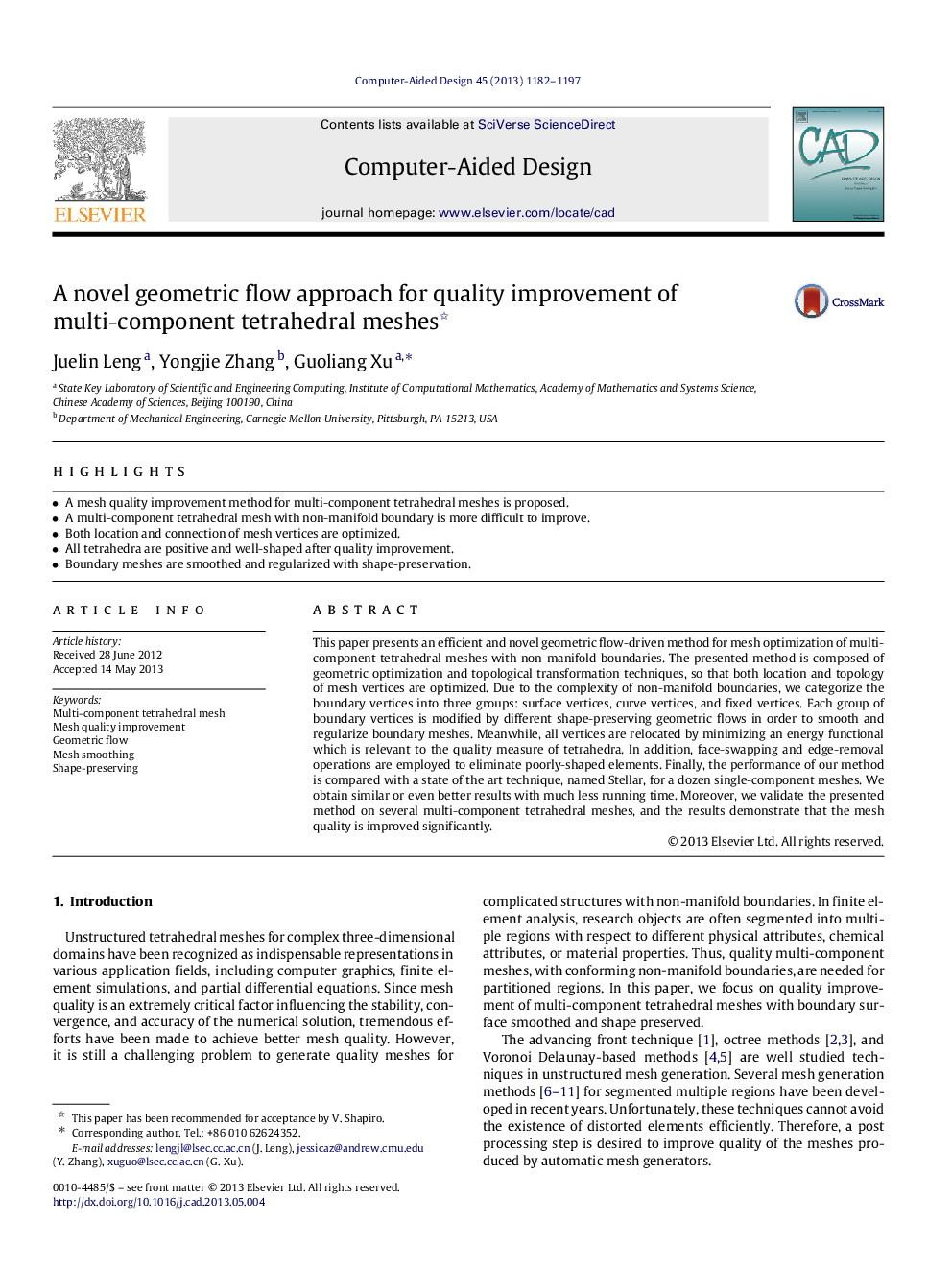| Article ID | Journal | Published Year | Pages | File Type |
|---|---|---|---|---|
| 440115 | Computer-Aided Design | 2013 | 16 Pages |
•A mesh quality improvement method for multi-component tetrahedral meshes is proposed.•A multi-component tetrahedral mesh with non-manifold boundary is more difficult to improve.•Both location and connection of mesh vertices are optimized.•All tetrahedra are positive and well-shaped after quality improvement.•Boundary meshes are smoothed and regularized with shape-preservation.
This paper presents an efficient and novel geometric flow-driven method for mesh optimization of multi-component tetrahedral meshes with non-manifold boundaries. The presented method is composed of geometric optimization and topological transformation techniques, so that both location and topology of mesh vertices are optimized. Due to the complexity of non-manifold boundaries, we categorize the boundary vertices into three groups: surface vertices, curve vertices, and fixed vertices. Each group of boundary vertices is modified by different shape-preserving geometric flows in order to smooth and regularize boundary meshes. Meanwhile, all vertices are relocated by minimizing an energy functional which is relevant to the quality measure of tetrahedra. In addition, face-swapping and edge-removal operations are employed to eliminate poorly-shaped elements. Finally, the performance of our method is compared with a state of the art technique, named Stellar, for a dozen single-component meshes. We obtain similar or even better results with much less running time. Moreover, we validate the presented method on several multi-component tetrahedral meshes, and the results demonstrate that the mesh quality is improved significantly.
